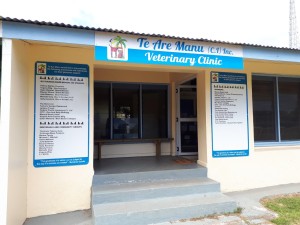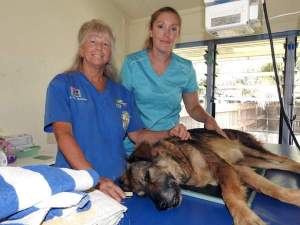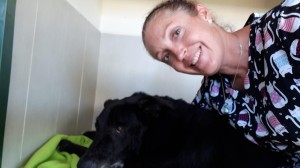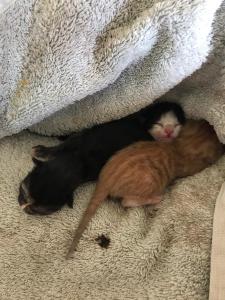Some readers might be thinking, “Where?”. The Cook Islands are a tiny polynesian country in the South Pacific Ocean with political ties to New Zealand. It is made up of 15 islands and has only 17,500 citizens. People speak both English and Cook Islands Maori. Most citizens live on the island of Rarotonga, a paradise 32 km (19 miles) around with picture perfect beaches, a reef within sight, and a mountainous center. There are chickens….everywhere. Honestly, if you’ve seen the Disney movie Moana…you get the idea. This is where my adventure takes place.
Rarotonga
I exited the tiny airport baggage area and a lady placed a flower lei around my neck. “Kia Orana” (pron. key-orana), she said. I would soon come to know this as a friendly welcome that I would use frequently. I had been travelling for 5 months since leaving my full time job in Qatar and had arrived early in the morning from Canada via Australia. I was exhausted. I looked forward to a quick ride to the shared volunteer house and some breakfast with clinic manager Debbie. I would be staying for a month.
The Cook Islands has no veterinarian, government or private. Citizens are currently dependent on a charity clinic called Te Are Manu (The House of Little Animals) that runs strictly on donations. Payments are encouraged but not completely required. They have a very nice facility with adequate equipment and medications. They have no permanent medical staff and depend on volunteer vets, techs, and nurses that come and go throughout the year. This presents numerous challenges, especially with consistency. I worked with many other great volunteers during my time there, sometimes just one (Hi Katie!) sometimes many.


Although Rarotonga does not have the highly contagious and serious viruses that I often see in the developing world, they do have a few “classic” emergencies of their own. These would include hit by car (every day), fish poisoning (the reef fish can be infected with cigatera poison from eating algae), and stepping on a stone fish (it shoots poison into you when pressure is applied to it’s spines). I saw all three.
CAUTION SOME PHOTOS ARE GRAPHIC
My clinic days often consisted of a morning doing emergencies and surgeries, then an afternoon of appointments. Spay and neuter is highly encouraged. I would spend ten nights on call and see nine out of hours emergencies in total. On my first full shift in the clinic I had just returned at the end of the day from two at home euthanasias when the calls started to roll in. The second of three emergencies was very dramatic. A dog that had been at home all day tied up, now had a very small amount of blood on it’s fur and was paralyzed in the hind end. As I examined it more carefully I found a number of small holes in the skin with dots of blood. These injuries did not make sense. Why could it not move it’s hind legs? I started to wonder, had this dog been shot? I took some quick xrays and hospitalized the dog. These digital xrays would have to wait until morning to be seen, as they had to be developed at the human hospital, just a quick drive up the hill. The next day my questions were answered. This big happy dog had multiple bullets from an air gun inside her. Although these can often be painful but insignificant, in this case her spinal cord had been hit. Sadly, due to the circumstances the owner rightfully chose euthanasia.
Dog with Bullet in it’s Spine
A Saturday evening brought an unusual call. I answered the phone and the local lady at the other end apologized for ringing out of hours. She was worried that her dog’s eyes might be popped out. I was taken off guard, asking if maybe the dog had been hit by a car? She indicated this was a possibility, but she had last seen the dog at noon and it had been fine. I headed to the clinic with the nurse, a quick 3 min walk away. Although I was prepared, I was not prepared. She lifted the dog out of the car and I gasped out loud. The left eye was not in it’s socket. The right eye area was swollen but was in. There were some mild scrapes on the head. There were no other injuries. This dog had likely been hit by a scooter. I advised her that I would try my best to save the dog’s eye and vision right away. She had not brought a financial donation but offered to trade me some fresh fish and chips for our services. I told her she could keep her dinner. The nurse and I proceeded to sedate the dog and with some loose sutures placed and a count to three….we popped her eye back in on the first try. Victory! Her eye would be sutured shut for a few weeks now to heal.
Eye Out and In
One of my regular daytime exams was a very old black lab mix with a toe that had been seen a few times over the past months. This dog was quite arthritic and stiff but was still enjoying life except for this toe. It was swollen, angry, and infected. I let his owner know that I suspected this was cancer. We made a decision to go ahead with anesthesia and remove the toe. I had not done a toe amputation since my year in Belize, but it went well and I’m sure he felt a LOT better. I did not amputate any limbs during my visit, but my colleague Dr Chelsea from the USA removed a dog’s front leg due to irreparable injury.
Toe Amputation

The arrival of other volunteer vets meant that I could also have a few days/nights off. This allowed me to experience some of this beautiful island. I was very lucky to live in a volunteer house that is right on the beach with incredible snorkeling right out the front door. Massive purple starfish, loads of sea cucumbers, and so many types of tropical fish right at my fingertips. It was amazing. I also went on a snorkel tour with an underwater scooter, where I was able to go out past the reef and see beautiful corals and the brightest blue color of an endless bottomed ocean.
The island is very hilly in the center, so I also had the chance to do some challenging hikes with awesome views. We even had a random dog join in for a full morning hike.
Hiking
Near the end of my stay, my partner Mick joined me and we took a day trip to one of the other Cook Islands, Aitutaki. This was a 500 km flight away. We saw the island then spent the day on a catamaran, snorkeling and eating local foods. The colors of the ocean were incredible. Many survival type shows are filmed there.
Aitutaki
Soon my time was drawing to an end. I was working with a number of other volunteers on my last day and preparing to spay a cat. A lady called in, she stated that her cat was giving birth but she thought her intestines where out. Um. Pardon? This did not make sense and so we asked her to come straight in. She appeared quite quickly in the waiting room and Dr Ellen had a look. She then came to get me to see what I though, Ellen looked worried to say the least. There in a cardboard box were two small, wet, newborn kittens, and a mother cat with a big piece of her dirty small intestine hanging from her belly. In the end we determined she had been attacked by a dog. I promised the woman my best, but prepared her for the worst. The cat looked like she was starting to think about dying. Her kittens looked cold and quiet. Drs. Ellen and Michelle gave her IV fluids, antibiotics, and pain meds. They stabilized her while I quickly spayed the cat that was waiting. I then took her to surgery, unsure if she had more kittens inside. After cleaning her intestine as best I could, I went into her belly and saw her torn uterus. The dog bite had gone right through it. There were two kittens still inside her, one was still alive but deeply under anesthesia by now. I explored her further and found that what looked like an additional small puncture off to the side was actually a second large gash through her abdominal muscles. After delivering her remaining kittens by c-section and spaying her, I made sure her other organs were not injured and began to suture her large wounds closed. In the meantime the nurses were bottle feeding and warming the kittens she had birthed at home. Dr Michelle and her daughter began to revive the kitten from inside her. It was a huge team effort. We took the cat to recovery. We warmed her, we doted on her, she began to wake up. Just a short time later she was eating! I could not stop smiling, I thought she might just make it. I was proud of myself. The staff let me know that the following day, once her pain meds were weaned, her babies were returned to her. She loved them like the whole thing had never happened. This little family was able to go home.
Severely Injured Cat in Labor
Her Kittens

My time in Rarotonga was really rewarding. I learned some of their language and their culture as well as providing them with veterinary care. People were kind and appreciative. Many local businesses offered me discounts or free items. I can not say thank you enough for the help of some great veterinary colleagues from all over the globe. It was hard to say goodbye. I know I left Te Are Manu in good hands and hope to visit again. Meitaki maata Rarotonga. Thank you big.

I’m now off to my new permanent home in Sydney Australia and am super excited to be working at the famous Bondi Vet. A new adventure begins.










































